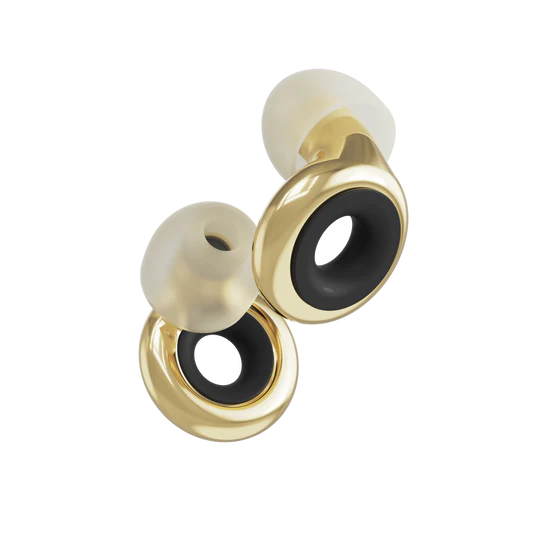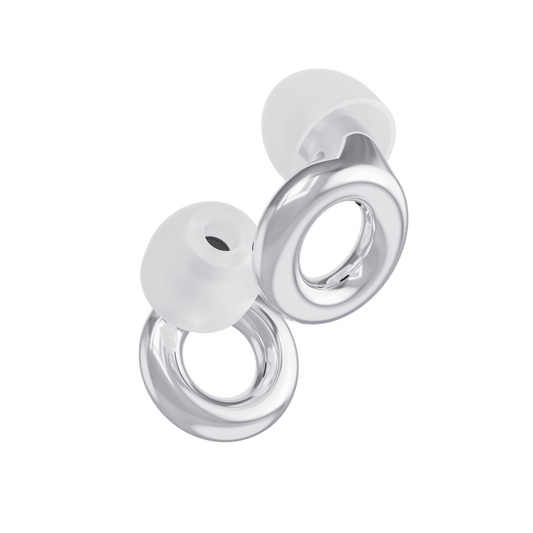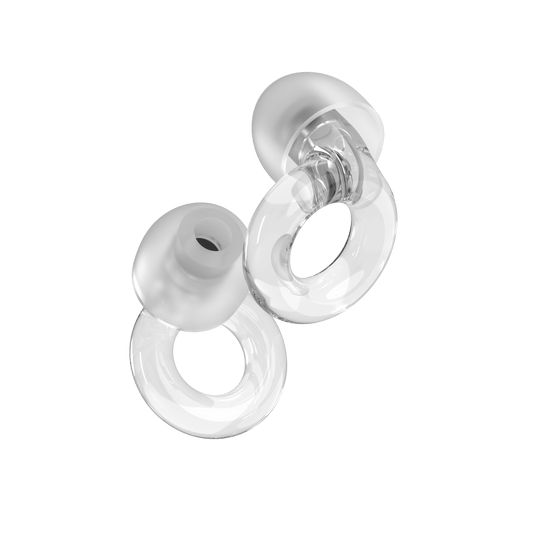Key takeaways
- Misophonia is a condition that causes an intense emotional reaction to particular noise triggers, like chewing, slurping and sniffing
- It usually develops when people are in their early teenage years
- There is little research into misophonia and its causes
- It’s thought that it’s a psychological condition rather than an auditory one
- There are lots of ways that people with misophonia can reduce the impact misophonia has on their lives, including earplugs, therapy and stress reduction
If you’ve ever felt an intense anger when you hear someone’s music leaking out of their headphones, or someone drumming their fingers on the table, you may have misophonia.
But what does misophonia mean? What causes it? And is there anything you can do about it?
Let’s take a look at everything you need to know.

What is misophonia?
So, misophonia: what is it? The term derives from the Greek words misos (hate) and phónè (voice or sound). The literal misophonia meaning, then, is ‘hatred of sound’.
The term misophonia was first used in 2001, when it was coined by professor Pawel Jastreboff and doctor Margaret M. Jastreboff. Prior to this, various other terms had been used to describe the condition, including ‘soft sound sensitivity symptom’, ‘select sound sensitivity syndrome’, ‘decreased sound tolerance’ and ‘sound rage.
In a nutshell, misophonia is a condition in which certain noises trigger an emotional response in the person hearing them. As audiologist, Kathleen Wallace explains:
“Misophonia is an emotional disturbance to a particular sound, like chewing or someone clicking a pen: really common little things that are annoying to most people but it’s intolerable to people that actually have it.”
There’s no definitive list of sounds that trigger someone with misophonia, but the two Kathleen Wallace has described are among the most common. Others include:
- Audible breathing
- Slurping
- Sniffing
- Cracking joints
- Yawning
- Sighing
- Swallowing
- Rustling papers
- Tapping on a keyboard
- Lip smacking
- Crunching
People can also be triggered by repetitive movements, like someone drumming their fingers against a table or jiggling their foot. Often, these sounds or repetitive movements might not be noticed by others around them, but to someone suffering from misophonia, they can be unbearable.
It differs from another condition, hyperacusis, in which sounds cause a reaction in the sufferer. Misophonia triggers an emotional reaction, while hyperacusis causes a physical pain in the ear. While in misophonia, louder sounds might result in the sufferer becoming more agitated, louder sounds cause a more painful reaction in hyperacusis.
It’s not physical pain we’re talking about, then, with misophonia. Instead, sounds set off an emotional reaction in people with misophonia, which can range from mild to severe.
Misophonia symptoms
What are the symptoms of misophonia? They vary from person to person, and some sounds may cause someone to have a more intense reaction than others. Some people are triggered by one sound only, while others may have difficulties with a range of different noises.
A 2018 research study by Rouw and Erfanian suggests that the emotions associated with misophonia include:
- Anger
- Irritation
- Stress and anxiety
- Aggravation
- Feeling trapped
- Impatience
Sufferers may feel all of these to some degree, or have one dominant emotion that’s associated with sounds, such as anger, and they may feel them to a lesser or greater degree depending on how severe their misophonia is.
If you have a mild form of the condition, the signs and symptoms of misophonia for you may include feeling uncomfortable, anxious, disgusted, or having the urge to remove yourself from the situation.
People suffering from more severe misophonia may feel hatred, anger, panic, fear, rage or extreme emotional distress.
Whether you feel mild or more severe emotional symptoms of misophonia, you may also experience some physical symptoms as a result of sounds, such as the feeling of pressure in your chest, sweaty palms, an increased heart rate, or a desire to stop the person from making the sound – although it’s rare for people who suffer from misophonia to actually lash out or assault someone making a noise.
Misophonia and anxiety often go hand in hand. People who suffer from misophonia may be reluctant to put themselves into situations where they experience sounds they find irritating, which could lead to isolation. If the noise of other people eating is a trigger, for example, then you might eat your meals alone in your room, or avoid going to restaurants. That can have a big impact on your social and family life.
How common is misophonia?
If you have misophonia and think you’re alone: think again. New research from King’s College London has found that 18.4% of the UK population has the condition – that’s one in five people.
The research found that 18.4% of participants experienced misophonia to an extent that it was a significant burden on them and, interestingly, 14% of those deemed highly affected by misophonia had heard the term before.
So, if you’ve been feeling anxious or annoyed by the noises other people make, but you didn’t realise there was a name for it, know that you’re not the only one. It’s a surprisingly common condition, but as we’ll discover below, it isn’t yet very well researched.
What causes misophonia?
Misophonia isn’t widely understood, but one thing we do know about misophonia is that it tends to develop early, as explained by Kathleen Wallace:
“The interesting thing is that the onset of it is usually in your teenage years. The average onset is 12/13/14 years old. So I think there's also this fear that people won't be taken seriously when they report having it because there are a lot of other things going on around that age. And it tends to really peak in college and we see it more with women than men for some reason. But beyond that, there's still a lot that needs to be investigated about it.”
She goes on to explain that the lack of research into misophonia makes it difficult to fully understand what causes it:
“Misophonia is complicated because it's one of those things that's hard to pin down. Is it an ear-related thing? Is it a brain thing? Is it something that should be dealt with by a psychologist or an audiologist? And there's still a lot of research that needs to be done about it because we don't know enough about it yet to really be able to manage it well.”
She leans towards it being more of a psychological condition rather than an auditory one, however – and other studies back up that viewpoint, too. One study, which looked at a small sample of 20 people with misophonia and 22 people who don’t suffer from the condition, found that the brain plays a part in our reactions to certain sounds.
The researchers scanned the participants’ brains, and found that the parts of the brain that are responsible for long-term memories and fear are activated when hearing trigger sounds. This explains the strong emotional reactions people with misophonia have to certain sounds. It also suggests that the condition is rooted in our brain, with some sounds triggering a stronger reaction in this part of the brain for certain people, which results in feelings of anger, fear, anxiety or frustration.
Another study, conducted in 2021, found that misophonia is linked to irregular brain connectivity and a larger amygdala. The amygdala is the part of our brain that helps to process emotions, emotional behavior and motivation – and the study found that the size of your amygdala may dictate how you respond to certain sounds.
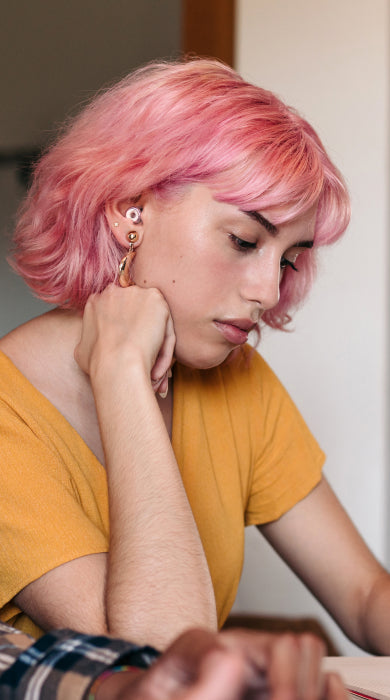
Is misophonia an anxiety disorder?
Misophonia isn’t an anxiety disorder, but anxiety and misophonia can be closely linked. Both conditions can trigger the flight or fight response, which is the automatic physiological response to an event that one perceives to be stressful or frightening. This triggers the sympathetic nervous system, preparing the body to react to the danger – either by fighting it or running away from it. That’s why we experience symptoms like sweating palms, a racing heart and harder breathing when we’re stressed or anxious.
However, misophonia is triggered by external stimuli, while anxiety can be triggered by both internal and external sources. So they’re not exactly the same, but that’s not to say that people who experience anxiety can’t experience misophonia, and vice versa.
If you have misophonia, you may find that you’re often very anxious, if you’re worried about hearing sounds that distress you, or your reactions to those sounds.
Misophonia can be difficult to diagnose, because many of its symptoms overlap with the symptoms of other conditions like general anxiety disorder and obsessive compulsive disorder.
Is misophonia a mental illness?
Well, it’s not currently included in the Diagnostic and Statistical Manual of Mental Disorders (DSM-5), although some doctors and organizations are advocating for its inclusion, under the category of ‘Obsessive Compulsive and Related Disorders’.
The International OCD Foundation suggests the following criteria for diagnosing misophonia:
- Hypersensitivity to the presence (or anticipation) of a specific sound that may be accompanied by hyper- arousal, irritation, anger/outbursts, or fear.
- Avoidance of sound triggers or stimuli associated with specific sounds.
- The individual’s sensitivity and autonomic/emotional experience and/or avoidance/behavioral response results in significant distress or impairment (e.g., tantrums, disrupted educational/occupational functioning, or significant family accommodation of symptoms).
- Symptoms are not better explained by another psychiatric disorder.
These diagnostic guidelines would help doctors to diagnose misophonia as a separate disorder, avoiding confusion with other conditions like anxiety.
Is misophonia a trait of ADHD?
Like anxiety, there seems to be a link between misophonia and ADHD, in that many people who suffer from misophonia also have ADHD, and vice versa.
Research into misophonia is still in its infancy, so there is little evidence to suggest that the two are linked. However, one 2020 study did look at comorbidities of misophonia, with a sample of 575 people. They found that 5% of the participants (31 people) also had ADHD, and 3% (14 people) had autism. It’s not definitive evidence, but it does suggest that there could be a link between the two.
People with ADHD are often hypersensitive to sights, smells and sounds, which can be distracting and can cause a strong emotional response. This is because people with ADHD can have difficulty filtering out and processing unnecessary external sensory input. To put it more simply, if you have ADHD, you may struggle when there’s lots going on at once and become overwhelmed.
Let’s say you’re trying to focus on getting some work done. But the people to your left are talking, and the person to your right is eating lunch. There’s also the whirr of the printer behind you, the hiss of the coffee machine and the clattering of plates being loaded into the dishwasher. The sensory overwhelm can lead to feelings of stress, anxiety, anger and disgust, very similar to the feelings triggered by misophonia.
How to treat misophonia
If you suffer from misophonia, it can make day-to-day life very difficult, whether you’re struggling with unwanted sounds at work or at home. As Kathleen Wallace sums up:
“There is noise everywhere in general. So if you are more sensitive to it, just getting through your regular day can be very difficult for this population.”
So, how can you make things easier for yourself? As Dr Wallace notes, “you really need to control the reaction to it more so than actually addressing the input or the actual stimulus.”
With that in mind, here are the main treatments for misophonia:
- Tinnitus retraining therapy, which helps people with misophonia to cope with their trigger sounds so that they cause them a less extreme reaction
- Therapy, including cognitive behavioral therapy (CBT) and talking therapies
- Counterconditioning, a type of therapy that focuses on changing one’s response to a stimulus
You may also want to focus on reducing the number of triggering sounds in your environment.
Earplugs for misophonia are one way to take the edge of all the noises that stir up an emotional reaction, as they filter sounds to a reduced volume. Dr Kathleen Wallace doesn’t recommend wearing earplugs all the time, as it could make things worse in the long run. But they can be effective in building up your tolerance to triggering sounds.
Try earplugs like Loop Experience Plus (Pro), which are designed with a patented acoustic channel and mesh, taking the edge off irritating sounds so you can stay calm and focused.
Educating yourself about the condition can also help you to better manage your symptoms. After all, knowledge is power. Listening to podcasts about misophonia is one way to stay on top of your knowledge and you’ll learn lots of great tips and tips from other sufferers, too.
Our earplugs for Misophonia
Misophonia, explained
Whether you suffer from misophonia yourself, or you’re looking to support a friend or family member who does, we hope that you better understand the condition now, and have discovered some coping strategies that can help you deal with it. Misophonia is a little-understood condition, but there are clear ways that sufferers can reduce the anxiety the condition causes them, from using earplugs to take the edge off to treating your emotional responses with therapy.
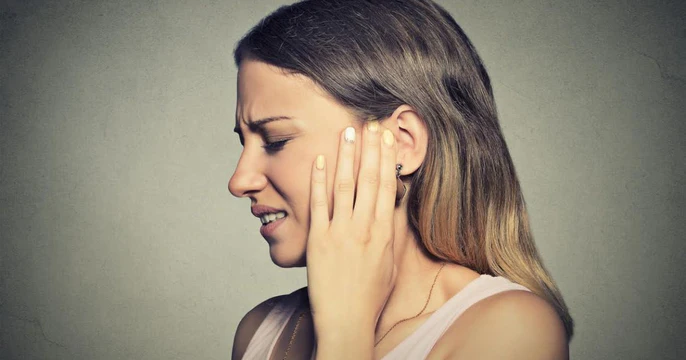
What is Tinnitus?
What is Tinnitus? Tinnitus is an audiological and neurological condition. It’s the perception of sound when no actual...

How To Stay Focused At Work and Improve Concentration
Having trouble concentrating whilst in a bustling office? Discover our top tips for staying focused at work so you ca...

Are misophonia and ADHD connected?
Is misophonia a form of ADHD? We explore the possible connections between the two conditions and answer all your ques...


















